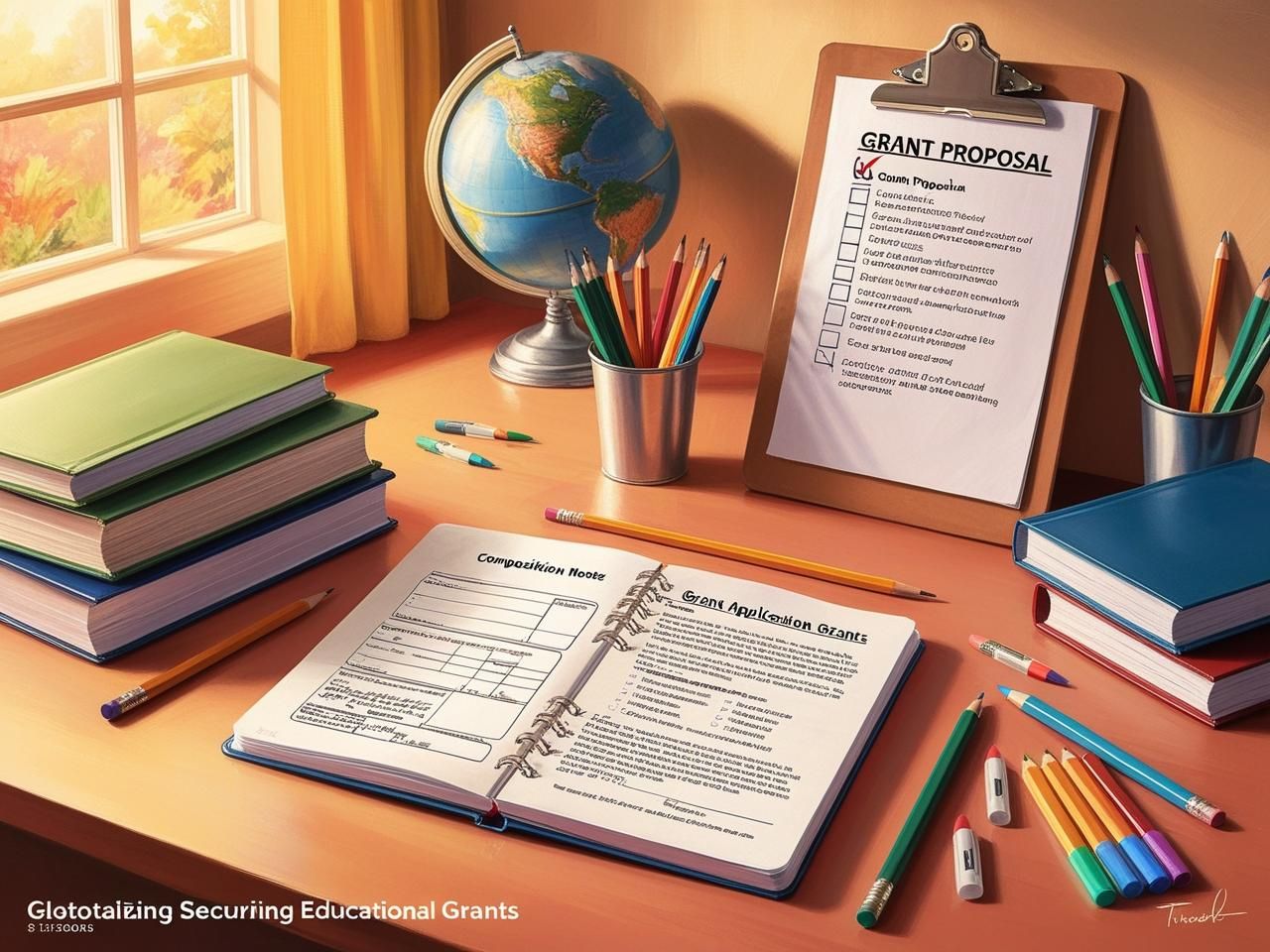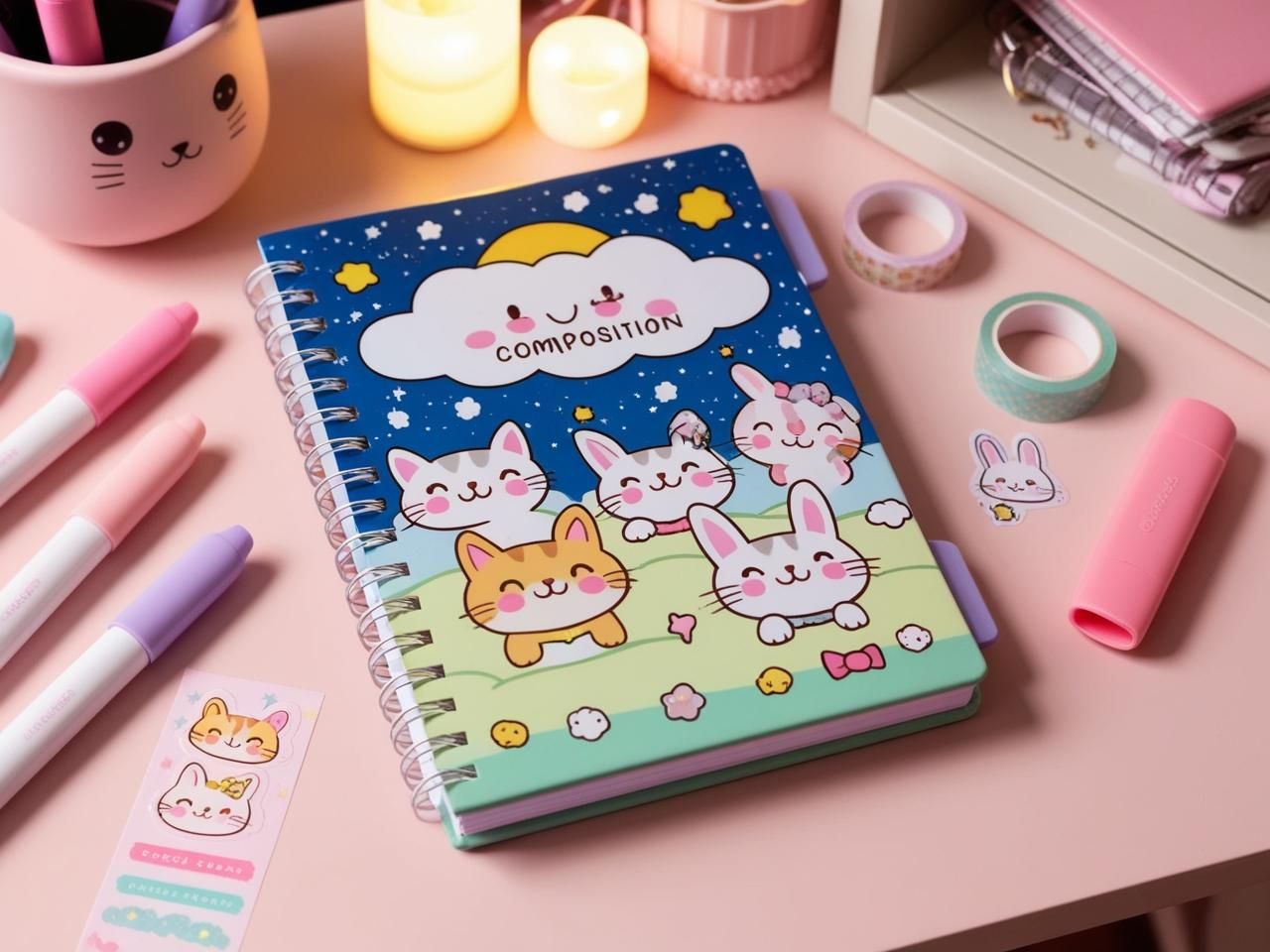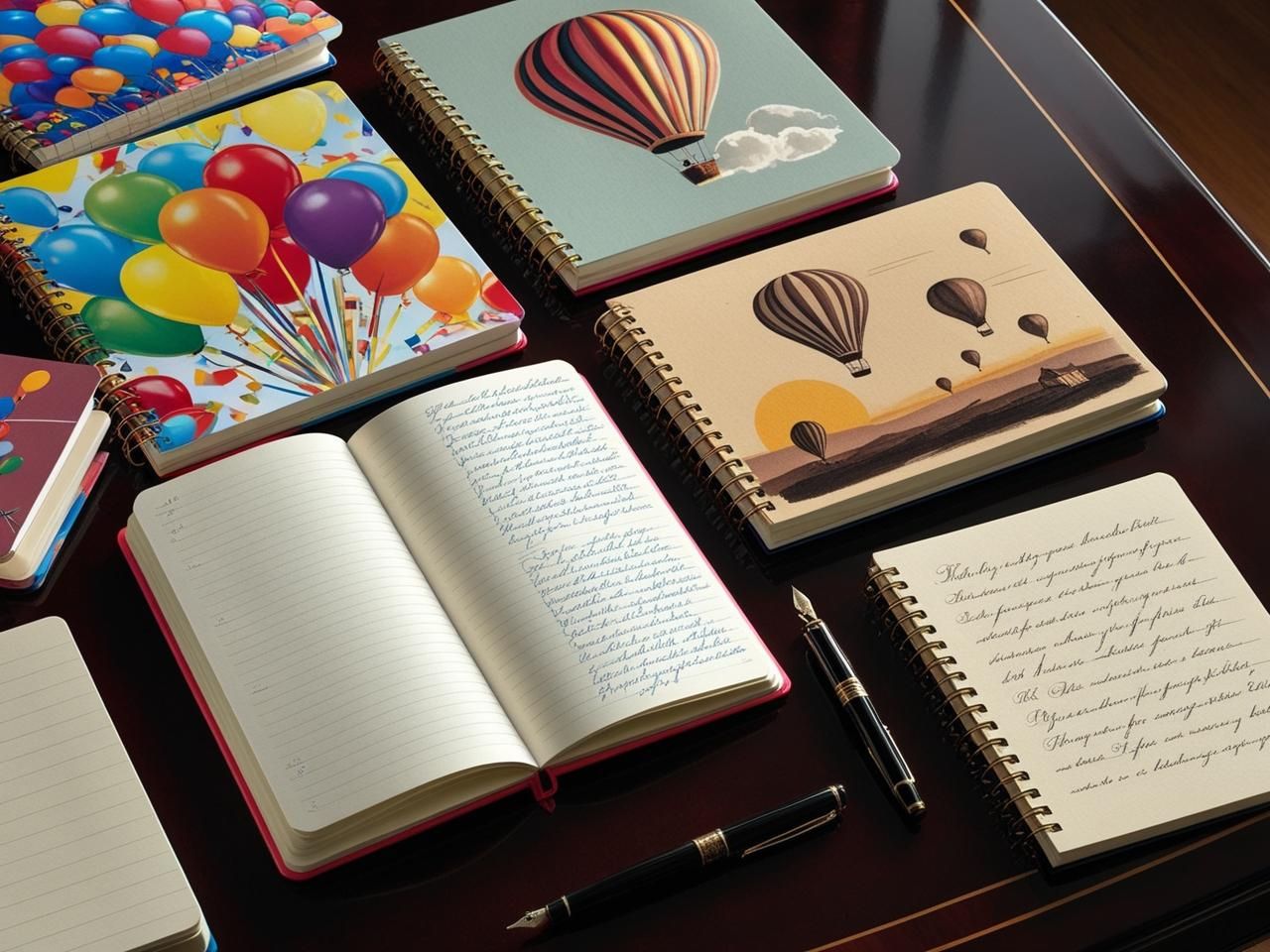- COMPOSITION NOTEBOOK
- Guides
- How to get grants for educational supplies?
How to get grants for educational supplies?
- Category: Guides

This step-by-step guide “How to Get Grants for Educational Supplies?” is designed to empower educators, schools, and organizations with the knowledge and resources they need to successfully secure funding for essential educational materials. By outlining key steps such as identifying grant opportunities, crafting compelling proposals, and understanding grant requirements, this post addresses the financial challenges many educators face in acquiring necessary supplies for effective teaching and learning. With this guidance, readers will be equipped to navigate the grant application process confidently, helping to enhance their educational offerings and improve student outcomes.



Table of Contents
Toggle1. Identify Your Needs
Assess the educational needs of your classroom or program. Consider the subjects you will teach and the age group of your students. List all the relevant topics and activities that will be covered throughout the year. Research the textbooks that align with your curriculum. Determine the number of copies needed based on the size of your class and ensure they are accessible for all learners.
Identify the technology requirements for effective teaching and learning. Make a list of devices, software, and applications that will support your instructional strategies. Include essential art supplies, such as paints, brushes, and paper, if applicable. Don’t forget to account for general classroom materials like markers, glue, and organizational tools. Aim for a comprehensive list that ensures all necessary resources are accounted for to create an engaging and effective learning environment.
2. Research Grant Opportunities
Search for grants that focus on funding educational supplies by utilizing various online resources. Access databases like Grants.gov, Foundation Center, or GrantWatch to identify opportunities specifically aimed at educational initiatives. Filter your search results to target grants that provide funding for classroom materials, technology, and other learning resources.
Reach out to local foundations and community organizations that may offer grants for educational purposes. Explore their websites or contact them for information on any open grant applications. Don’t overlook government resources, as many local, state, and federal programs support educational supplies. Compile a list of potential grants, noting their specific requirements and deadlines to streamline your application process.
3. Understand Eligibility Requirements
Carefully review the eligibility criteria for each grant opportunity. Assess the specific requirements outlined in the grant guidelines and ensure that your project or organization meets them before proceeding with the application. Take the following steps to confirm your eligibility:
- Read all grant documentation thoroughly, including FAQs and eligibility sections.
- Identify if your organization type aligns with the funding source (e.g., non-profit, educational institution).
- Check for geographic restrictions that may apply to the grant.
- Verify any specific project requirements, such as target populations or project types.
- Ensure your organization’s financial status meets the grantor’s stipulations.
- Acknowledge any deadlines and submission requirements for documentation.
Compile all relevant information about your project and organization. Highlight how you meet each eligibility requirement, preparing this information for easy reference during the application process. If any criterion is not met, consider adjusting your project or exploring other grant opportunities that fit your profile better.
4. Prepare Your Proposal
Draft a compelling grant proposal by clearly outlining your educational needs. Start with a brief introduction that identifies the specific supplies or resources you require, such as new textbooks, art materials, or technology upgrades. Use statistics or anecdotes to illustrate how these resources will enhance the learning environment and directly improve student outcomes. For example, if you are requesting new science lab equipment, mention how it will facilitate hands-on experiments that engage students and deepen their understanding of the subject matter.
Detail your budget meticulously, breaking down costs for each supply and providing a rationale for every expense. List the estimated price for items such as a classroom set of tablets or educational software licenses, and explain how each expenditure contributes to achieving your educational goals. For instance, if you request funding for a math tutoring program, detail the cost of hiring a specialized tutor, the materials needed, and describe the expected benefits, such as improved test scores or increased student confidence in math skills. Be specific about how the funding will be utilized, ensuring that funders understand the direct impact their contributions will have on your educational objectives.
5. Submit the Application
Review the application guidelines meticulously as outlined by the grantor. Verify the eligibility criteria, funding priorities, and specific program requirements to ensure your project aligns with their expectations. Collect all necessary materials, including letters of recommendation, financial documents, and project proposals. Double-check that you have included any supplementary information requested, such as a detailed budget or timeline.
Complete the application process ahead of the deadline by submitting all required documents. Use an organized layout to present your information clearly and concisely. Instead of waiting until the last minute, give yourself ample time to address any unforeseen issues or technical difficulties that may arise. Confirm submission through the designated platform or method specified by the grantor and ensure that you receive a confirmation of your application for your records.
6. Follow Up
Track your application status meticulously after submission. Regularly check the online portal, if one is provided, or refer to confirmation emails that might include estimated timelines for decision-making. Note important dates in your calendar, such as when follow-up inquiries can be made, ensuring you’re always informed about your application’s progress.
Reach out to the grantor for updates or additional information. Draft a polite inquiry email or make a phone call to the designated contact person, ensuring you express your continued interest in the opportunity. For example, if the grantor mentions a response timeframe of six weeks, consider following up a week or two after that period. Be prepared to provide any further documentation they may request, such as updated budgets or project timelines, demonstrating your organization and commitment to the application process.
Maximizing Funding Opportunities
In conclusion, securing grants for educational supplies is an achievable goal for educators when approached with the right strategy. By thoroughly researching available funding opportunities, crafting a compelling proposal, and preparing a detailed budget, educators can enhance their likelihood of success. With careful planning and dedication, they can unlock valuable resources that will enrich their classrooms and support their students’ learning experiences.
Essential Supplies Needed
- Grant application templates
- Budget templates or worksheets
- Guidelines for grant writing
- Sample proposals
- Educational needs assessment tools
- Contact information for potential grantors
- Organizing software or tools (like spreadsheets)
- Checklist for grant application components
- Calendar or planner for deadlines
- Reference materials or books on grant writing

Maximize Your Funding
- Research Local and National Grant Opportunities: Explore both local and national organizations that provide grants for educational supplies, such as foundations, government programs, and non-profits
- Identify Specific Needs: Clearly define what educational supplies you need and how they will benefit students, making your application more compelling
- Understand the Requirements: Carefully read the eligibility criteria and guidelines for each grant to ensure your application meets all necessary requirements
- Create a Detailed Budget: Outline a clear and realistic budget for the supplies you intend to purchase, explaining how each item contributes to your educational goals
- Highlight Student Impact: Emphasize how the requested supplies will directly benefit students and enhance their learning experience
- Collaborate with Colleagues: Work with other educators to strengthen your application, showing a collaborative effort that illustrates a broader need
- Tailor Your Proposal: Customize each grant application to align with the specific mission and goals of the funding organization
- Include Evidence of Need: Use data, testimonials, or case studies to demonstrate the current need for supplies in your educational setting
- Keep it Clear and Concise: Write a well-organized proposal that is easy to read, staying focused on the key message without unnecessary jargon
- Submit Early: Avoid last-minute submissions by preparing your application well in advance of the deadline to ensure all documents are accurate and complete
- Follow Up: After submitting your application, follow up with the grant provider to express your continued interest and to inquire about the timeline for decisions
- Build Relationships: Network with grant-making organizations and attend workshops to improve your chances of securing funding in the future
Maximizing Your Educational Supplies: Tips and Best Practices
- Identify Essential Supplies: Start by gathering basic educational supplies such as notebooks, pens, pencils, erasers, highlighters, and a ruler. This will form the foundation for your learning materials
- Organize Your Workspace: Create a designated study area with storage solutions for your educational supplies. Use bins or organizers to keep items neatly arranged and easily accessible
- Utilize Resources Effectively: Learn how to effectively use items like flashcards, colored markers, and sticky notes for studying and organizing information, making difficult concepts easier to comprehend
- Incorporate Technology: Explore educational apps or digital tools that complement your supplies. For instance, you can use note-taking apps alongside your physical notebooks for a blended learning experience
- Establish a Routine: Develop a study routine that incorporates the use of your educational supplies. Consistency will help you stay organized and make efficient use of your materials
Essential Resources for Learning Success
How can teachers effectively organize and store educational supplies?
Teachers can effectively organize and store educational supplies by following several best practices:
- Categorization: Group similar items together, such as writing tools, art supplies, and teaching aids. This makes it easier to find what is needed quickly.
- Labeling: Use clear and visible labels on storage bins, drawers, and shelves. This helps both teachers and students know where items belong.
- Use of Storage Solutions: Invest in storage solutions like bins, shelves, and carts that can accommodate different types of supplies. Clear containers are particularly useful for visibility.
- Regular Inventory: Conduct regular audits of supplies to identify what is being used and what is not. This helps in keeping the inventory manageable and reduces clutter.
- Accessibility: Store frequently used items in easily accessible locations, while less-used supplies can be kept in out-of-the-way storage. This encourages efficiency during lessons.
- Digital Management: For digital supplies, using a document management system or an inventory tracking app can help keep track of materials and resources.
- Involving Students: Teach students how to organize supplies and involve them in maintaining order in the classroom. This fosters responsibility and encourages a collaborative environment.
- Rotating Supplies: Rotate supplies based on the curriculum schedule or themes to keep the learning environment dynamic and relevant.
Implementing these strategies can create a well-organized classroom environment that enhances teaching efficiency and student learning.
RELATED POST
Composition Notebook by Pieffeweb | Cookie Policy | Privacy Policy | Disclaimer





